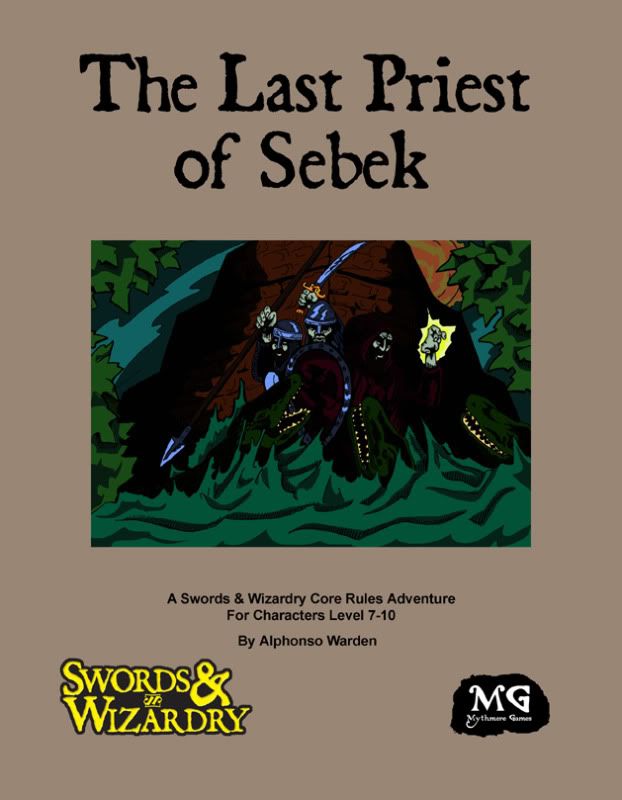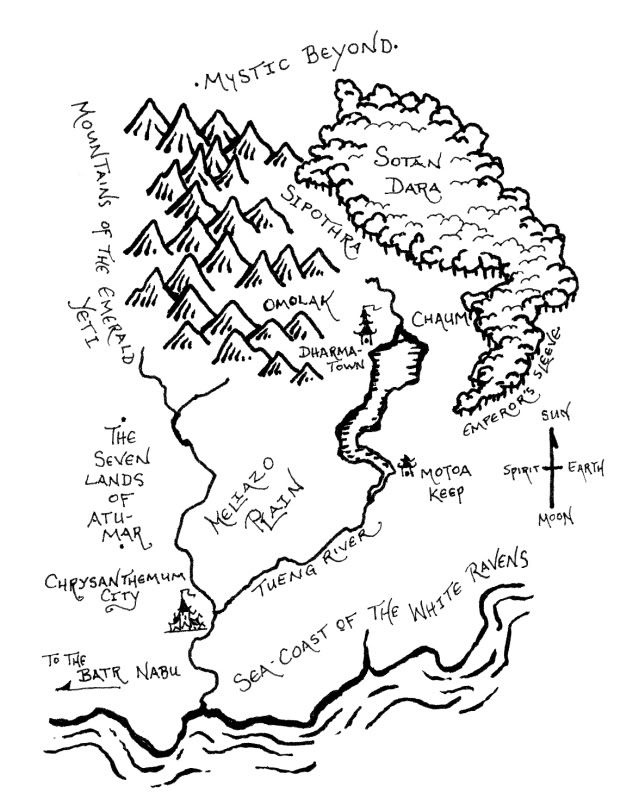At this point, I'm starting to wrap up the series of posts on the Commercialization of the Old School, moving from observations to suggestions.
RecapJust to recap the earlier posts, which are here at
Part 1,
Part 2,
Part 3, and
Part 4:
(1) For-profit publishing isn't going away, because the money, even though it doesn't provide much of a financial reward, provides a psychological reward for publishing. Publishing resources is addictive and is an independent hobby for those who like to do it. Since they (including me) are going to publish anyway, they (we) will gravitate toward the methods that provide the most psychological reward.
(2) For-profit publishing is not going to drive out free publishing efforts. Many people don't fit the profile described in (1) above, because their source of psychological reward comes more from the giving than from the feedback. Moreover, there's still a "competitive" or "free market" incentive, whatever you want to call it, for a for-profit publisher to give away free material.
(3) Overall, for-profit publishing has increased the quantity of resources available. However, even though the resources are generally inexpensive, the amount of resource available to any given gamer is now limited by a budget since the additional material isn't free. There are more choices, but the benefit of the additional for-profit material varies in accordance with the gamer's budget. For someone with a gaming budget of zero, the available resources have (a) probably decreased somewhat, and (b) carry an unjustified stigma that it might now be only the lower quality resources that are available for free.
(4) For-profit publishing has changed the tenor of a lot of our discussions, even if it's just a matter of seeing a lot of publisher threads on the messageboards and blogs.
What sort of action is practical?First off, the scope of desired change is limited: for-profit publishing provides a benefit, and isn't going away, so what we're looking for here is only the "win-win" types of changes which would snap things into a better situation. It's completely impractical to make sweeping calls for change, or generate manifestos, or propose any sort of plan for cooperative action that isn't (a) easy and (b) free. The further you move away from easy and free, the fewer people who will adopt the idea. If it's easy and free, and provides some benefit, you can start to gain traction.
Secondly, how do you figure out what to look at?We identified the problems, which are (1) the poorer you are, the more pissed you are about the changes; (2) there's so much brand-management going on here that it doesn't feel as much like a community; (3) with more products out there, and not being able to page through them in a gaming store, it's very hard to identify what's good - and even some good resources might turn out to be something that doesn't match what you wanted, or what your style of gaming might be.
SolutionsOne exists right now, which is snarking at publishers like me. It's not very efficient in terms of hitting the right target, and since it's really directed at driving publishers away, it's not going to fully achieve the goal (see above, that people will keep publishing anyway). Nevertheless, let's be totally clear, it's about the only option available as a "protest" at this time.
A more productive alternative would be to create a message board dedicated to developing and offering free material. This already exists as a part of Dragonsfoot, and the commercial publishers are relatively well segregated there as well, so I think Dragonsfoot serves this idea with about 95% quality already. This indicates that the success of a splinter board wouldn't be likely, because most of the people working on free materials won't see a reason to splinter off from a board that already does a good job of this. So the bad news is that a splinter board is probably doomed - the good news is that it's doomed because one already exists. People tend, I think, to forget about the archives at Dragonsfoot because of all the for-profit noise, but it's there and it's active.
One good solution to the atmosphere of brand-identification would be to create an umbrella name brand that would indicate the broad compatibility of all these for-profit products. This wouldn't reduce all the commercial-type language of branding and trademarks and so on, but it would keep it from looking so much like a splintered community and make it feel more like a general project. Chad Thorson has offered one possibility on his blog
Maximum Rock & Roleplaying.
I'm not convinced about the details of Chad's "OSR" logo, even though it's a really witty play on the old TSR logo. The reason I'm not convinced is that I think the focus of a logo like this needs to be on
compatibility rather than on "revival" or "renaissance." If the logo were "old school compatible" I would adopt it in a heartbeat. I'd be happy to use one logo showing the broader-level compatibility of my modules (the "OSR" or "OSC" one) side-by-side with a second one that shows the more specific compatibility (i.e., with Swords & Wizardry and OD&D74). I'm not wild, on the other hand, about identifying with the "OSR." I don't have any issues with the term "OSR" to describe a time period or the general surging in resources, but I don't really see it as something that means anything if it's used to label an actual
product. And I'm absolutely not criticizing Chad or anyone who is already using this logo - I'm just saying that I'm dithering on it for the time being because OSR, to me, doesn't say a darn thing as a description of a project. Am I an OSR publisher? Definitely. Are my products "OSR?" Yes. Does that say anything about the actual product? Not really. Have I got a better idea? Yes: calling it "Old School Compatible," but that's not much of an improvement in terms of what bothers me about the whole "community logo" idea, and in the broad scope of things it's like arguing about how many angels can dance on the head of a pin.
So, for the time being, I'm sitting on the fence as far as the idea of a community logo. I do think it would help matters some, BUT I also think that many people will just see it as a cynical profit-gambit or a rah-rah clubhouse attitude by whoever uses it. Indicating broad compatibility is one thing that's pretty unobjectionable, but claiming membership in a trend is somehow different. I can't put my finger on it, but something about it makes me uncomfortable.
More ideas and thoughts in a later installment...
















